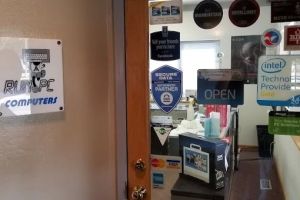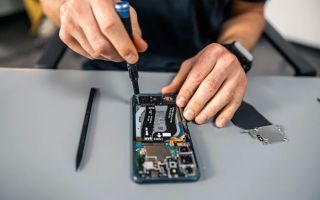How to Recover Files Using a Bootable USB Drive
- 1. Why Use a Bootable USB Drive for File Recovery
- 2. Steps to Recover Files Using a Bootable USB Drive
- 3. Common Issues During File Recovery and How to Fix Them
- 4. Best Tools for Recovering Files Using a Bootable USB
1. Why Use a Bootable USB Drive for File Recovery
When you face a system crash or need to recover files from a computer that won't boot, using a bootable USB drive is an excellent solution. A bootable USB allows you to access your system's hard drive without relying on the internal operating system. This is especially useful when your computer won't start due to system corruption, accidental file deletion, or hardware failure.
Not only can a bootable USB drive help recover important files, but it also allows you to perform other essential tasks, such as running disk checks, repairing system files, or installing a fresh operating system if needed. The flexibility and speed of using a bootable USB make it an invaluable tool for anyone facing file recovery issues.
2. Steps to Recover Files Using a Bootable USB Drive
Recovering files with a bootable USB drive is a straightforward process, but it requires some preparation. Follow these steps to recover your important files:

Micro Center
730 Memorial Dr, Cambridge, MA 02139, USA
1. Create a Bootable USB Drive
The first step is to create a bootable USB drive. You can do this using tools such as Rufus, which will allow you to create a bootable USB drive from an ISO file. Choose a reliable operating system or file recovery tool for your USB drive. Make sure to back up the USB drive before proceeding, as it will be formatted during the process.

Secure Data Recovery Services
524 W Laurel St #2, Fort Collins, CO 80521, USA
2. Insert the Bootable USB Drive and Restart Your Computer
Once you’ve created the bootable USB, plug it into the computer that requires file recovery. Restart the computer and enter the BIOS settings (usually by pressing F2, DEL, or ESC depending on your system). In the BIOS, set the boot order to prioritize the USB drive over the internal hard drive.
3. Boot from the USB Drive
Save the BIOS settings and exit. Your computer will now boot from the USB drive. Once the bootable USB has loaded, you’ll have access to the operating system or file recovery tools on the drive. From here, you can navigate to the file recovery tool and begin scanning for lost or corrupted files.
4. Recover Your Files
Using the recovery software on your bootable USB, scan your hard drive for recoverable files. The software will display a list of files that can be restored. Select the files you want to recover and save them to an external drive or a safe location on the network.
3. Common Issues During File Recovery and How to Fix Them
While the process of recovering files with a bootable USB is usually straightforward, there are some common issues that you may encounter. Here are some tips on how to troubleshoot them:
1. USB Drive Not Booting
If your computer is not booting from the USB drive, make sure that the boot order in BIOS is correctly set to prioritize the USB. Also, check that the USB is properly inserted and that the drive is bootable.
2. Missing or Inaccessible Files
If the file recovery software doesn't detect any files or your files are inaccessible, try using a different recovery tool. Tools like Recuva or EaseUS Data Recovery Wizard offer advanced scanning algorithms that can locate files that standard software might miss.
3. Slow Recovery Process
File recovery can take time, especially if the drive is large or if many files need to be recovered. To speed up the process, ensure that your USB drive is fast (USB 3.0 or higher) and that your external storage device is also capable of fast write speeds.
4. Best Tools for Recovering Files Using a Bootable USB
There are many tools available for file recovery via a bootable USB drive. Here are some of the best options to consider in 2023:
1. Recuva
Recuva is a free and powerful tool for recovering lost files from hard drives, memory cards, and external drives. Its simple interface makes it easy to use, even for beginners. It’s perfect for recovering deleted documents, photos, and other important files.
2. EaseUS Data Recovery Wizard
EaseUS offers both free and premium versions of its recovery tool, which supports recovery from damaged or formatted drives. It’s an excellent option for more advanced recovery needs, as it provides extensive file recovery features and support for multiple file types.
3. MiniTool Power Data Recovery
MiniTool is another great choice for users who need a more robust recovery solution. It allows you to recover files from a wide range of devices, including external storage, optical discs, and even RAID systems.





























